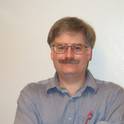
- Atmospheric aerosols -- Composition -- Analysis,
- Atmospheric aerosols -- Spectra -- Measurement,
- Air -- Pollution
Ground-based aerosol measurements made in June 2010 within Sacramento urban area (site T0) and at a 40-km downwind location (site T1) in the forested Sierra Nevada foothills area are used to investigate the evolution of multispectral optical properties as the urban aerosols aged and interacted with biogenic emissions. Along with black carbon and non-refractory aerosol mass and composition observations, spectral absorption (ᵝabs), scattering (ᵝsca), and extinction (ᵝext) coefficients for wavelengths ranging from 355 to 1064nm were measured at both sites using photoacoustic (PA) instruments with integrating nephelometers and using cavity ring-down (CRD) instruments. The daytime average Ångstrӧm exponent of absorption (AEA) was ~ 1.6 for the wavelength pair 405 and 870nm at T0, while it was ~ 1.8 for the wavelength pair 355 and 870nm at T1, indicating a modest wavelength-dependent enhancement of absorption at both sites throughout the study. The measured and Mie theory calculations of multispectral ᵝsca showed good correlation (R2= 0.85–0.94). The average contribution of supermicron aerosol (mainly composed of sea salt particles advected in from the Pacific Ocean) to the total scattering coefficient ranged from less than 20% at 405nm to greater than 80% at 1064 nm. From 22 to 28 June, secondary organic aerosol mass increased significantly at both sites due to increased biogenic emissions coupled with intense photochemical activity and air mass recirculation in the area. During this period, the short wavelength scattering coefficients at both sites gradually increased due to increase in the size of submicron aerosols. At the same time, BC mass-normalized absorption cross-section (MAC) values for ultraviolet wavelengths at T1 increased by ~ 60% compared to the relatively less aged urban emissions at the T0 site. In contrast, the average MAC values for 870nm wavelength were identical at both sites. These results suggest formation of moderately brown secondary organic aerosols formed in biogenically-influenced urban air.

This is the discussion paper and it is/has been under review for the journal Atmospheric Chemistry and Physics.
© Author(s) 2013. CC Attribution 3.0 License.